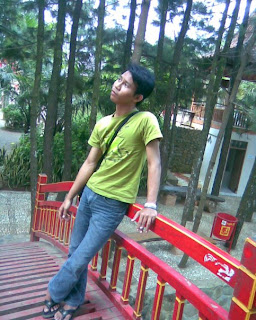
Periode 1960 – 1969
Beberapa kejadian memberikan masukan terhadap pergeseran teoritis secara besar – besaran berkenan dengan teknologi instrusional pada akhir tahun 1950 dan awal 1960an, terutama peristiwa peluncuran sputnik pada tahun 1957 yang mencengangkan dunia. Akibat dari itu, terutama di Amerika, sekolah di kritik karena kegagalannya mengajarkan science dan matematika dalam kapasitas yang cukup. Karena itu tekanan lebih di alamatkan kepada teknologi instruksional, akibatnya terdapat dua konstruk teoritis muncul secara bersamaan yang mempengaruhi lapangan teknologi instruksional. Pertama yaitu pengaruh yang kuat dari aliran behaviorisme terhadap semua pendekatan belajar dan kedua adalah pendekatan sistem – sistem yang dating dari teknik mesin dan teknologi. Gerakan yang berbeda ini akhirnya melahirkan dan saling melengkapi yang di sebut dengan Pengajaran Terprogram. Gerakan kaum behavioris melahirkan pengembangan tujuan behavioral, karena diperlukan perumusan tingkah laju lebih lanjut dalam merancang sebuah proses pembelajaran.
Periode 1970 – 2983
Mendekati akhir tahun 1970, muncul kembali pendekatan kognitif dalam pembelajaran. Banyak ahli psikologi yang mengusulkan hal tersebut, salah satunya Wittrock. Menurutnya pendekatan kognitif berimplikasi bahwa belajar dan pengajaran secara ilmiah akan lebih produktif bila di pelajari sebagai sesuatu yang bersifat internal, yakni suatu proses kognitif berperantara dari pada sebagai produk langsung dari lingkungan, orang atau factor eksternal lainnya.
Periode 1983 – muthakir.
Pada masa ini berlangsung kekacau balauan akibat pertentangan dari landasan teoritik teknologi instruksional. Perbedaan pendapat ini terutama di alamatkan kepada para perintis audio visual. Seperti Salomon, yang menganggap audio visual itu sebagai agen informasi dan bukan sebagai stimulus yang berlangsung untuk respon tertentu. Lebih lanjut mereka berpendapat bahwa media tidak lebih dari kendaraan yang mengangkut para ahli ke konferensi pemecahan masalah dan member sumbangan terhadap pemahaman para ahli tentang masalah tersebut.
Apasih Teknologi Pendidikan?
Teknologi berasal dari bahasa Yunani yaitu Techne dan logos. Techne diartikan sebagain cara, pengetahuan, keahlian, keterampilan. Logos adalah ilmu.
Teknologi pendidikan diartikan sebagai hardware yang menunjang kegiatan dalam sistem pembelajaran.
Teknologi pendidikan juga diartikan sebagai keseluruhan komponen yang ada dalam sebuah sistem pendidikan baik peralatan – peralatan media teknologi maupun teknik – teknik pengembangan yang slalu progress menuju sebuah proses pembelajaran.
Konsep teknologi pendidikan
Secara konsep dan praktek memerlukan banyak perhatian segala pihak, tidsk hanyaguru.
Belajarnya sangat berkaitan dengan perkembangan psikologi siswa, pengalaman yang diperoleh siswa, kemampuan yang harus di pelajari, lingkungan yang kondusif sarana dan prasarana yang mendukung.
Klasifikasi Media Teknologi untuk Pendidikan
Ada beberapa pengklasifikasian media teknologi yang biasanya digunakan dalam sistem
pendidikan. Rudy Brezt mengklasifikasikan media teknologi untuk menjadi tiga unsur :
visual, suara, dan gerak. Briggs mengklasifikasikan menjadi tigabelas macam : objek, model,
suara langsung, rekaman, media, transparansi, film bingkai,film, televisi, dan gambar. Gagne
mengklasifikasikan menjadi tujuh media : pelontar stimulus belajar, penarik minat belajar,
contoh perilaku, member kondisi eksternal, menuntun cara berpikir, memasukan keahlian
ilmu, menilai prestasi dan member umpan balik.
Sistematis Perkembangan Teknologi Pengajaran
• Alat bantu visual
• Alat bantu audio-visual
• Komunikasi audio-visual
• Kontribusi ilmu pengetahuan perilaku
• Pendekatan sistem dalam pengajaran
• Dari komunikasi audiovisual dan pendekatan sistem ke teknologi
Keunikan teknologi pendidikan sebagi suatu bidang terapan terlihat dengan menggunakannya bermacam media, teknik, metode dan strategi pembelajaran yang penekanannya berfokus atau menyentuh individu secara pribadi serta menggunakan pendekatan sistem dalam pemecahan masalah
Bahwa perkembangan teknologi pendidikan di pengruhi oleh inovasi teknologi itu sendiri yang mempunyai dampak terhadap perkembangan proses belajar mengajar.
Agar Teknologi Pendidikan Efektif
• Tentukan tema yang berkaitan dengan kurikulum
• Sesuiakan tingkatan belajar
• Waktu mengajar
• Focus (memberikan garis besar topic)
Hal – hal yang mendukung Teknologi Pendidikan
• Sistem berfikir
• Desain sistem
• Kualitas pengetahuan
• Manajemen perubahan
Dampak Positif
• Sumber data dan informasi serta sarana dan prasarana pertikeran data dan informasi
• Informasi dan berkomunikasi secara cepat tanpa ada batasan wilayah, ruang, dan waktu
• Terbukanya sumber informasi yang tadinya susah diakses menjadi sanagt mudah
• Memperluas pergaulan sebagai makhluk social
• Dapat melaksanakan akses internet
• Relative lebih efisien dan lebih menarik
Dampak Negatif
• Adanya ancaman virus
• Pembajakan karya intelektual
• Penyebaran situs – situs pornograpi
• Kurangnya interekasi antara guru dan siswa
• Berubahnya peran guru
• Kejomplangan dikalangan miskin
• Masih mahalnya mengakses






